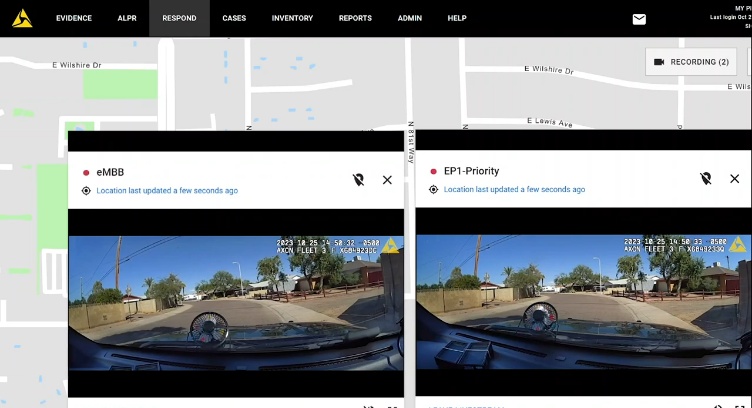Through its Axon Fleet 3 and Axon Respond services, Verizon recently demonstrated its ability to maintain performance levels for mission-critical functions while passing video data across network slices in a complete commercial 5G environment.
Network slicing is a technology that enables customers to send data over a virtual end-to-end network tailored to specific application requirements while optimizing network performance to support all services. This feature is designed for network traffic on Verizon’s new cloud-native, containerized, and virtualized standalone 5G core, delivering unprecedented levels of service agility, flexibility, and automated scalability. .
In this demonstration on Verizon’s live 5G network in Phoenix, Arizona, Axon ran parallel tests of Axon Fleet 3 and Axon Respond solutions. The Axon Fleet 3 in-vehicle video system provides live maps and live streaming from mobile cameras, as well as real-time situational awareness through Axon Respond, enhancing situational awareness for law enforcement personnel who are not in the field.

The demonstration ran a single video feed over a network slice on Verizon’s commercial 5G Ultra Wideband network and 5G standalone core. Another test was run concurrently on Verizon’s commercial 5G Ultra Wideband network without network slicing.
Test results were measured in four categories.
-
Time to first frame. This is the time between when a remote law enforcement officer requests a stream and when that officer has remote access to his live stream.
-
Start Percentage, the percentage of time a stream starts before timing out and potentially allowing law enforcement officers who are not on scene to relinquish remote access to the video and instead call on-site law enforcement officers.
-
Latency, or responsiveness of the application across the network.
-
jitter. The sequence and timing of audio and video packages sent over a network.
Results showed that performance levels were maintained while the application was running on Verizon network slices. Compared to Verizon’s commercial 5G Ultra Wideband network, services on network slices showed:
-
95th percentile time to first frame improved by 53%
-
5% increase in starting percentage
-
68% improvement in latency
-
83% improvement in jitter
Blake Bullock, Senior Director of Product Management, Axon
When involved in public safety incidents, accurate and timely live streaming and location information is critical to enhancing law enforcement’s situational awareness and ability to make decisions based on real-time, accurate information. . In conjunction with Verizon’s 5G low-latency network slices, we have improved streaming rate success rates and reduced time to first frame for Axon Fleet 3 Respond services in both network congestion and cell edge conditions.
Adam Koeppe, Verizon Senior Vice President of Network and Technology Planning
This latest network slicing demonstration illustrates one of many use cases in which network slicing can be a game-changer for enterprises, the public sector, and Verizon Frontline customers. Over the past few years, we have expanded our network at scale, including building cloud-native architectures, virtualizing from core to edge, building advanced 5G standalone cores, increasing fiber core capacity, and adding robust and diverse networks. I have experienced change. Manage your spectrum assets and inject intelligence across your network. These changes will enable us to develop and test this new technology that effectively matches the required network resources with the performance characteristics required for apps and use cases to operate effectively.


